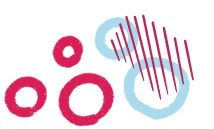A strong localization kit is made up of multiple elements that vary in accordance with the complexity of a particular project. In general, localization kits contain a translation memory, glossary, termbase, style guide, and reference materials. Having a well-built out localization kit is a great way to get a project headed in the right direction. That being said, there is much more you can do to help your localization team do their best work and to ensure they have a great experience working with you.
Let’s look at a few ways you can become your localization team’s hero!
Provide editable files

Your localization team will save a lot of time if you provide them with an editable file as a source file to kick off their translation. Having an editable file helps avoid file conversions, which can look rather unpolished. If you do have to pursue a file conversion because the editable file is unavailable, the localization team will need to create a polished final document and DTP will be necessary, which can extend the project timeline.
Determine the file extension you want to receive
If your localization team is aware of the type of file extension you want to receive, they’ll be able to choose the best translation tools for the specific project. Using the correct tool will help them prevent unnecessary exports and imports into different tools. If the content consists of loose strings of text, which is usually the case with software, then it’s important to organize it in a logical way that everyone on the team can understand.
Add comments to the files

Adding comments to the file can help translators make sense of content. For example, if a translator is working on translating a video game, they may need context surrounding a character’s gender. Leaving a comment indicating what the gender of each character is, is super important as in some languages, adjective choices are affected by gender. Leaving comments throughout the file that provide additional context can help your localization team make the best word choices.
Share a demo or beta version
When it comes to apps, video games, and software, sharing a demo or beta version can really help a translation team get a feel of the product. If you aren’t able to share an advanced copy of the product, perhaps you can share watermarked screenshots instead, so the team isn’t working blindly.
Stay on top of formatting
If you want the formatting of the target document to mirror the formatting in the original document, you need to share that desire with your localization team in advance so that they can allocate the correct amount of time and resources to formatting the target document properly.
Determine timeline expectations and be flexible
While your localization team will always do their best to meet your desired deadline, be open to being flexible on your deadline if it helps the team avoid rushing and allow them to assess the project and confirm if the amount of time needed in order to provide a high-quality deliverable is in line with your expectations.
Be available and ready to answer questions

Your team will need to be able to come to you with questions in order to create the best possible final product. You don’t need to be available to answer questions 24/7, but you should make it clear how and when they can get in touch with you if they have questions. To help answer any major questions they may have, you can establish a query sheet as a way to streamline communication.
All of that being said, you’ll still need to be available to answer questions from time to time, so they can move forward with confidence.









